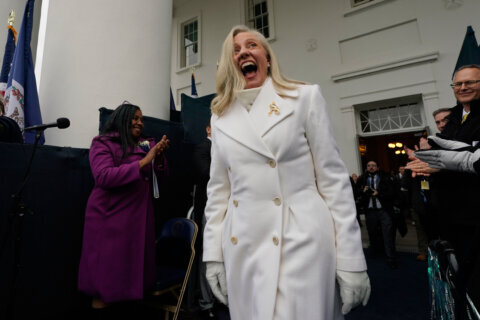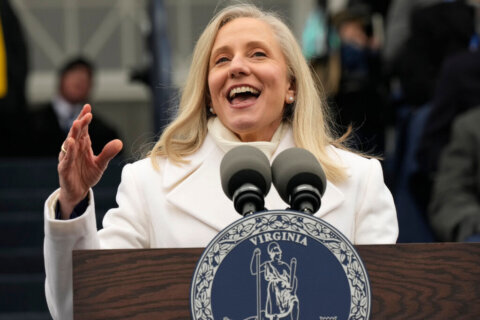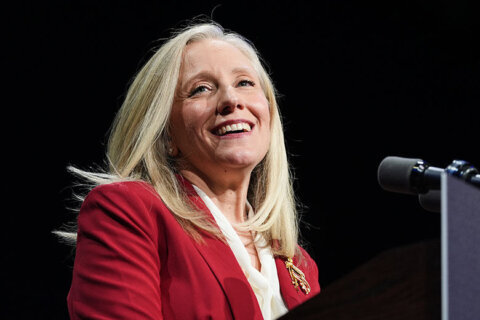This article was reprinted with permission from Virginia Mercury.
Virginia is the recipient of two federal grants to capture climate changing emissions, one focused on methane and another on promoting natural solutions to capture carbon.
The funds, about $150 million, are from the U.S. Environmental Protection Agency’s Climate Pollution Reduction Grant program, created by the Inflation Reduction Act.
“Investments such as this are paramount to ensuring communities across the region who are impacted the most have access to reduced climate and air pollution,” said EPA Mid-Atlantic Regional Administrator Adam Ortiz. “We need our partners to help us in tackling climate challenges.”
Virginia’s funding is funneled through the Department of Environmental Quality, which is primarily working with Virginia Energy to use about $99.9 million towards methane capture from mined lands, and the Department of Wildlife Resources, to use $50 million on the land preservation component. The awarding to DWR is also part of a collaborative effort with the state of North Carolina that received a total of $421 million, with about $47.2 million going to The Nature Conservancy’s operations in Virginia.
DEQ said the state’s methane capture component could reduce 25 million tons of greenhouse gasses by 2050. The Nature Conservancy estimates about 28 million tons of GHGs — the same amount produced by about 6.6 million cars — will be captured between 2025 and 2050 through regional partnership.
“These are intended to achieve immediate emission reductions in the short term,” said Tom Ballou, air data analysis & planning director at DEQ.
Minimizing methane
About $80 million of the methane capture funding will boost efforts already underway by current mining operations and abandoned mined lands project developers to remove the most potent greenhouse gas, which is 28 times more powerful than carbon dioxide at trapping heat in the atmosphere.
The idea of capturing methane — which is released during active mining operations to relieve pressure during underground digging to prevent explosions, and that naturally emanates from closed down sites — has been discussed in Virginia for at least a couple years. The EPA lists nine projects in the coalfields region of Southwest Virginia that can include capturing the methane and turning it into natural gas and flaring, or burning it.
Environmental nonprofits have pushed back against using methane as an energy source for the broader electric grid, beyond manufacturers using it to power their operations. The groups say converting methane to sellable natural gas would create a revenue stream for mining operations to continue and wouldn’t be a clean, zero-emissions source of electricity, like solar and wind.
But, with 80% of Vrignia’s coal being mined for ongoing metallurgical production of steel, the CPRG funding provides opportunities to “look at better ways” to mine, said Daniel Kestner, economic development manager at Virginia Energy.
“We know there’s a safety aspect around degassing those mines, as those workers are undergoing work, but also [an] opportunity to reduce greenhouse gas emissions and create jobs in these communities that have been impacted by the downturn in the coal economy,” said Kestor, adding that requests for proposals to use the funding could go out early next year. “It’s a pretty lofty goal, but we think it can be achieved with the use of technology.”
The remaining $20 million in grants for methane capture will go toward a potential of one to three projects at landfills in the central or Southwest Virginia regions to meet LIDAC requirements. One example of a landfill capturing methane is the Southeastern Public Service Authority landfill in Suffolk, which unveiled a $25 million renewable natural gas facility last year that collects and sells it as natural gas.
A portion of the $20 million will also fund food waste prevention at 15 to 20 Virginia universities, to divert food sources that are typically thrown out, despite not having expired, from ever getting to landfills and emitting methane in the first place.
A more natural approach
In addition to funding that will go toward the Virginia Port Authority and a Virginia Native American tribe yet to be chosen, the Department of Wildlife and The Nature Conservationy are leading Virginia’s effort to sequester carbon using forests, wetlands and peat.
To maintain wildlife habitat, DWR will embark on eight projects that include shoring up about 6,000 acres of wetlands by installing breakwaters to reduce the flow of energy that can crash into and erode shorelines. Several animal species, including the Saltmarsh Sparrow, use coastal wetlands to migrate around the Chesapeake Bay, explained Becky Gwynn, deputy director at DWR.
The agency will contract workers to restore about 2,500 acres of forestland in the coastal and Eastern Shore regions by removing invasive plant species and growing the Atlantic White Cedar, a tree that has long been harvested for shingles production, prior to the wood pellet industry staking a claim in the region.
“It was a win-win-win all around. It addresses clearly the overall goals of the grant program by facilitating natural carbon capture, but it also really is value-added and accelerates a lot of this important habitat enhancement and restoration,” said Gwynn.
The Nature Conservancy, an international environmental nonprofit, is also setting out to acquire land and place development-blocking easements across about 36,000 acres of forestland in Southwest Virginia, including Warm Springs Mountain in the Allegheny Highlands.
TNC will also preserve Longleaf pine across 7,750 acres on the East Coast, and about 150 acres of tidal wetlands that contain peat, a dirt that can sequester twice the amount of carbon that forests can.
The effort involves an analysis from Duke University and a third-party, VERRA, to validate the carbon that is stored. The TNC projects will not produce carbon credits, which companies can purchase to offset their other operations that emit greenhouse gasses, but may not result in funding going back to those communities producing the credits.
Bettina Ring, Virginia state director at the TNC, touted her organization’s respect for local communities and its “shared vision” of partnership with other groups to reach sustainability goals.
“Our entire organization is watching this project, we’re really excited about it, knowing it’s a game changer for biodiversity.”







